Results 1,061 to 1,070 of 12091
Thread: Anandtech News
-
10-18-11, 05:30 PM #1061
Anandtech: ASUS Zenbook UX21 Teardown
Since it is a new product line for ASUS we were eager to get a look inside the 11-inch Zenbook as we progressed through our review process. Similar to taking apart a MacBook Air, there are 10 screws around the perimeter of the bottom panel of the Zenbook. Unlike the MBA however, these aren't standard Phillips screws but rather Torx screws. I removed all ten with a T2 driver.
With the bottom panel off, the UX21 looks a lot like an 11-inch MacBook Air with some notable differences. The ultra slim cooling solution actually covers both the Intel Core i5-2677M and its accompanying HM67 chipset, whereas Apple only directly cools the CPU in the MBA. ASUS uses the same two-PCB approach that Apple does, using a slightly stiffer (and conveniently labeled) ribbon cable to connect the two boards.
ASUS uses a familiar stick form factor for its SSD. The 128GB UX21/31 models come with a SandForce SF-2281 based drive from ADATA while the 256GB models use a SanDisk U100 solution. The WiFi card in the UX21 is also a unique form factor:
Other interesting tidbits:
1) The ASUS power adapter is very MBA-inspired - I like it. Cable management is handled via a strip of velcro. ASUS also found a great place to put the Microsoft COA: on the power brick itself.
2) All Zenbooks ship with a USB Ethernet adapter, VGA adapter and two carrying sleeves: one for the adapters and one for the Zenbook itself.
Check out more in the gallery below and expect our review in the coming days!
Gallery: ASUS UX21 System & Dissection Tour





More...
-
10-18-11, 06:30 PM #1062
Anandtech: Hands-on With The Motorola Droid RAZR
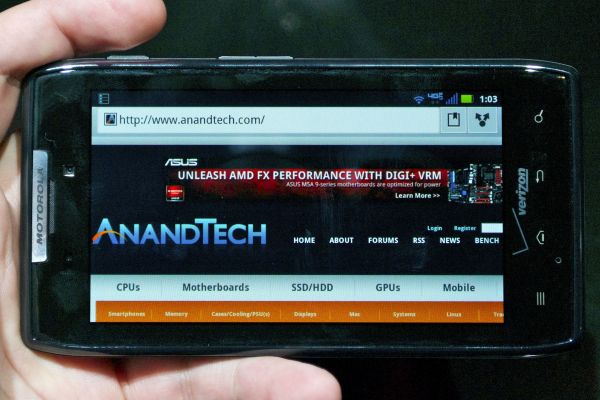
Unlike some prior events, reps were more than happy to let us get our grubby mits on the devices. Even going so far as to let us run benchmarks, as you can see, something often left until the PR reps are not looking. In fact, I was surprised when Motorola Product Manager Jeff Snow actually volunteered the SunSpider scores as soon as he saw our tag. This sort of access was appreciated and adds a lot to our coverage in the lead up to a full review. We got plenty of time with the Droid RAZR and got great answers from Jeff and his team. So what does the "world's thinnest smartphone" feel like?
Hardware wise, this feels as light as the SGSII (and it should at 127g it is 3g lighter than the Samsung Epic 4G Touch), but with a rigidity in the hand that you don't get from Samsung's thinnest phones. The stainless steel chassis of the device provides this rigidity, while being exceptionally thin, other body components are laminated upon this chassis to keep the phone thin, including the Kevlar layer that graces the back of the phone. It's unclear whether this is anything but a cosmetic addition, but either way it looks great. The Gorilla Glass covered display tapers down into the frame, like the Bionic, and at the similarly tapered corners of the device. Motorola's design language is much curvier than the original Droid. We've got a comparison table below that gives you dimensions, it feels similar to other 4.3" devices in the hand, despite being a little wider and a little taller, but compared to the Bionic the thinness is very noticeable. And the 30g weight savings is easy to notice.
Whipping around the UI was a breeze, transitions were snappy and opening and closing the app drawer was smooth. Opening apps was quick and as Anand mentioned in our browser preview, this is not the browser we handled in the Bionic. We don't know where the optimizations came from but scrolling and zooming were quick. Connected to Verizon's 4G LTE network we got decent, though not spectacular Speedtest scores inside the event venue. Loading the Anandtech homepage was quick, and the only one pause that I noted was likely the Flash components loading.Physical Comparison HTC Thunderbolt Motorola Droid X2 Motorola Droid RAZR Motorola Droid Bionic Height 122 mm (4.8") 126.5 mm (4.98") 130.70 mm (5.15") 127.5 mm (5.02") Width 67 mm (2.63") 65.5 mm (2.58") 68.90 mm (2.71") 66.9 mm (2.63") Depth 13.2 mm (0.52") 9.9 - 14.4 mm (0.39"-0.57") 7.1 - ?? mm (0.28" - ??") 10.99 mm (0.43") Weight 183.3 g (6.46 oz) 148.8 g (5.25 oz) 127 g (4.48 oz) 158 g (5.57 oz) CPU 1 GHz MSM8655 45nm Snapdragon 1 GHz Dual Core Cortex-A9 Tegra 2 AP20H 1.2 GHz Dual Core Cortex-A9 OMAP 4460 1 GHz Dual Core Cortex-A9 OMAP 4430 GPU Adreno 205 ULP GeForce PowerVR SGX 540 (@384 MHz) PowerVR SGX 540 (@304 MHz) RAM 768 MB LPDDR2 512 MB LPDDR2 1 GB MB LPDDR2 1 GB LPDDR2 NAND 4 GB NAND with 32 GB microSD Class 4 preinstalled 8 GB NAND, 8 GB microSD class 4 preinstalled 16 GB NAND, 16 GB microSD class 4 preinstalled 16 GB NAND, 16 GB microSD class 4 preinstalled Camera 8 MP with autofocus and dual LED flash, 720p30 video recording, 1.3 MP front facing 8 MP with AF/LED Flash, 720p30 video recording 8 MP with AF/LED Flash, 1080p30 video recording, 720p front facing 8 MP with AF/LED Flash, 1080p30 video recording, VGA front facing Screen 4.3” 800 x 480 LCD-TFT 4.3" 960 x 540 RGBW LCD 4.3" 960 x 540 Super AMOLED Advanced 4.3" 960 x 540 RGBW LCD Battery Removable 5.18 Whr Removable 5.65 Whr Removable 6.56 Whr Removable 6.11 Whr
The display was bright and crisp, and if it didn't come off in the pictures, let me be sure to mention that the viewing angles were spectacular. At this point, we've come to expect good things from Super AMOLED displays, and this looked good. The question is, what type of pixel arrangement are we looking at? We confirmed with Motorola that the display was Pentile, and initially it was described as the same arrangement as in the Bionic, which would make it RGBW. We haven't seen an AMOLED RGBW display yet so this was surprising. Further clarification leaves us still a bit confused, as it is now being described to us as RGB Pentile. This is likely RGBG Super AMOLED, though we won't know for sure till it comes in as this will be the first qHD Super AMOLED display we've seen, whichever Pentile stripe it comes in.
We'll know more when the review sample comes in but for now we can say that this phone felt every bit as fast as the Samsung Galaxy S II, had an impressive display and felt great in the hand. Stay tuned for our review as soon as we can get it out, and stay tuned for more coverage tonight.
More...
-
10-18-11, 10:10 PM #1063
Anandtech: Samsung Galaxy Nexus Officially Announced
Samsung today officially announced the specifications for the newest member of the Nexus family - Galaxy Nexus. The announcement closely matches what we've been anticipating for some time now, including a TI OMAP 4460 SoC at 1.2 GHz, 720p Super AMOLED HD display, HSPA+ or optional LTE connectivity and a few other things. We've put together a table with the specs handed out by Samsung at the event.
The profile of the Galaxy Nexus matches the teaser photos that Samsung has been pushing out, including a thin curved profile with a thickness of 8.94 mm at the thinnest point. Samsung also stressed that although the display size has increased, the phone hasn't gained much in terms of outline thanks to a reduced bezel size of just 4.29 mm on the left and right. Of course, the device will be host to the newest verison of Android 4.0 Ice Cream Sandwich when it launches.Samsung Galaxy Nexus SoC 1.2 GHz TI OMAP 4460 Display 4.65" 1280x720 HD Super AMOLED Camera 5 MP AF with LED Flash (Rear), 1.3 MP Front Facing Memory 1 GB LPDDR2, 16 GB / 32 GB NAND Dimensions 135.5 x 67.94 x 8.94 mm, 135 grams Battery 1750 mAh Li-Ion Network Support HSPA+ 21.1 850/900/1900/1700/2100
EDGE/GPRS 850/900/1900/
LTE depending on regionSensors Accelerometer, Compass, Gyro, ALS, Proximity, Barometer Connectivity 802.11n a/b/g/n (2.4/5 GHz), BT 3.0, NFC, USB 2.0
Samsung has announced that the Galaxy Nexus will be available sometime in November, and we look forward to getting some hands on time with the device and giving it a full review.
Source: Samsung Mobile
More...
-
10-18-11, 11:40 PM #1064
Anandtech: Google Introduces Us To Ice Cream Sandwich
When I said it would be a busy fall, I didn’t expect us to be covering two big announcements in one day, or three/four/five, depending on how you choose to count them. Samsung didn’t just show off new hardware, Google was there to show off the new software behind that hardware. Details of Android 4.0 Ice Cream Sandwich have been leaking for some time now but with the SDK published and the event wrapped up we have a better sense of what Google has in mind for the next phase in Android. Let’s get started.
Matias Duarte started off by introducing the audience to Android’s new font, Roboto. Playful though the name is, it is a stylish and elegant font, and while it might not strike the right note for everyone it certainly seems easy to read. It’s featured throughout ICS, including the digital clock on the lock screen which is where we’ll begin. The layout is familiar, and not too divergent in look. In function there’s some new tricks to show off. Swiping the unlock icon to the right takes you to your home screen, though swiping left takes you to the camera app, more on that in a bit. This trick has been seen before, most recently in HTC’s Sense 3.5. New - though perhaps not as revolutionary - is facial recognition based unlock, which Google aptly calls Face Unlock. This was a feature in my Lenovo S10 from several years back, and judging by the demo this implementation may face the same hurtles as that Lenovo, poor lighting leads to poor recognition. This may pan out, though right now it seems like a solution searching for a problem.
The gold standard for notifications systems has been WebOS since its introduction, with Android following close behind. In its latest incarnation the differences are mainly cosmetic and in the addition of a music notification with playback controls and the ability to swipe away individual notifications. These are features that we’ve seen in skinned and modded versions of Android for sometime, but welcome nonetheless. What we haven’t seen is the ability to peek at notifications from the lock screen and then go directly into the app that originated the notification upon unlock.
Having unlocked your phone you are now presented with a home screen that looks like a comfortable marriage between Honeycomb and Gingerbread. Honeycomb’s on screen buttons have evolved and are delightfully animated, and though anchored to the bottom or right hand side of the device, depending on orientation, they rotate appropriately. This area is called the System Bar, and will also be home to the Notification shade on tablet ICS devices. Just above the System Bar is the Favorites tray, an evolution of the docks we’ve seen before. Here you’ll find icons for Phone, People, Messaging, Browser and, of course, App Drawer, though it will be highly customizable, even supporting Folders. When you do decide to open an app, the Favorites tray becomes the Action Bar and provides contextual actions for the app you’re in. It can be at the top or bottom of the screen and can change configuration within the app based on context. In the Gmail demo, for instance, they showed how while in the Inbox the Action Bar had buttons to compose a new message, search your messages or access labels. Upon opening or selecting an e-mail, new buttons populate the Action Bar. Adopting the Action Bar will be a key UI element in ICS apps.
Back to the home screen, Google apps are now resizable and that functionality will be opened up to developers. The familiar home and back buttons are rejoined by the Recent Apps button from Honeycomb. This multitasking implementation looks and works very similarly as in the tablet OS, with the added ability to kill individual tasks with a swipe. This was an oft lamented absence in Honeycomb, as the list of apps could get quite long after several days of use.
Phones are meant as communications devices so Google spent time on the Phone, Messaging and People apps. The People app replaces the Contacts app of old, and is livened up with larger pictures and a lot more data. Opening a contact’s profile reveals the typical list of numbers and e-mails, but it also includes connections through social media, and a swipe to the left reveals an integrated aggregation of that contact’s updates within those networks. They’ve also included a new Favorites tab that introduces a UI concept that we’ll see recurring in Android from now on, and it may look familiar to Windows Phone 7 users. The Favorite’s tab displays larger high resolution images of your most common contacts in a tightly aligned grid that is described as a ‘magazine style UI’ and bears a striking resemblance to the panels popular in Microsoft’s Metro UI.
The Phone app has been updated with in-line visual voicemail (through Google Voice) amongst your call log, and a Favorite’s tab, as in the People app, that allows you to call common contacts with one touch instead of opening their profile first. Calling one of your contacts yields a new in-call screen that features a large profile image overlaid with call information and call functions.
The Messaging app gets its biggest update from the improved keyboard, which has in-line spell check, improved word suggestion with easier to select options, and a refined way to add words to the dictionary. The voice recognition functions of Android have been improved and they’ve implemented an ‘open microphone’ experience that allows you to dictate long messages and insert punctuation, regardless of any pauses you might have while composing. The engine even supports emoji.
The Browser gets a new ‘Save for off-line reading’ function that is aimed at more than just storing articles, but can include things like boarding passes, and train schedules. It also gets a tab management system that mirrors the Recent Apps function. Every browser iteration from Android features performance improvements and we expect this one to be no different, though they didn’t go into it at the event.
The Calendar app gets a new lay-out and features pinch to zoom for easily shifting from a broader to a more granular view of your agenda, and back again. They’ve extended the use of the swipe here to allow you to go back and forth between days/weeks/months. This same motion is found in the new Gmail app for browsing through e-mails quickly. And that Gmail app now gets two-line previews along with the other UI changes.
The Camera and Gallery apps have seen much work, and zero shutter lag exposure and a facial recognition function that keeps the image focused on identified faces are among the highlights. For Video the ability to zoom and continuously focus the shot while filming is a boon. And a new panorama mode allows users to easily create long shots with just a single motion, on the device and with a simple on-screen guide. Sharing from the redesigned Gallery app is a two tap affair, and the integrated photo editor allows cropping, rotation, red-eye reduction and the application of filters to captured photos. The Gallery itself is graced with that ‘magazine style UI’ and can be used to build Albums but can also sort pictures by location and faces.
NFC features prominently in Google’s plans with Google Wallet, and gains added functionality with Android Beam, which allows sharing of everything from files to links between two NFC enabled ICS devices.
Gallery: Android 4.0 - Ice Cream Sandwich UI Improvements





That was certainly a lot to go through, and there’s no doubt more to cover another time, for now, we can’t wait to get our hands on the Galaxy Nexus to find out what Ice Cream Sandwich feels like in action. And in the meantime we’ll dig around the readily available SDK to see what there is to see. November’s going to be a great month to shop for phones.
More...
-
10-19-11, 11:40 AM #1065
Anandtech: Amazon Kindle (4th Gen) Review
The new Kindle Fire may have gotten most of the attention when Amazon refreshed its Kindle lineup this year, but Amazon is still very much in the e-reader market. The fourth-generation Kindle, the Kindle Touch, and the Kindle Touch 3G all promise to deliver the traditional Kindle experience in a lighter and less expensive package - continue reading for our thoughts on the new $79 Kindle.
More...
-
10-19-11, 12:00 PM #1066
Anandtech: ARM's Cortex A7: Bringing Cheaper Dual-Core & More Power Efficient High-En
How do you keep increasing performance in a power constrained environment like a smartphone without decreasing battery life? You can design more efficient microarchitectures, but at some point you’ll run out of steam there. You can transition to newer, more power efficient process technologies but even then progress is very difficult to come by. In the past you could rely on either one of these options to deliver lower power consumption, but these days you have to rely on both - and even then it’s potentially not enough. Heterogeneous multiprocessing is another option available - put a bunch of high performance cores alongside some low performance but low power cores and switch between them as necessary.
NVIDIA recently revealed it was doing something similar to this with its upcoming Tegra 3 (Kal-El) SoC. NVIDIA outfitted its next-generation SoC with five CPU cores, although only a maximum of four are visible to the OS. If you’re running light tasks (background checking for email, SMS/MMS, twitter updates while your phone is locked) then a single low power Cortex A9 core services those needs while the higher performance A9s remain power gated. Request more of the OS (e.g. unlock your phone and load a webpage) and the low power A9 goes to sleep and the 4 high performance cores wake up.
While NVIDIA’s solution uses identical cores simply built using different transistors (LP vs. G), the premise doesn’t change if you move to physically different cores. For NVIDIA, ARM didn’t really have a suitable low power core thus it settled on a lower power Cortex A9. Today, ARM is expanding the Cortex family to include a low power core that can either be used by itself or as an ISA-compatible companion core in Cortex A15 based SoCs. It’s called the ARM Cortex A7.
More...
-
10-19-11, 12:00 PM #1067
Anandtech: HTC Updates the Evo 4G; Calls It The Evo Design 4G
In lots of ways the original Evo 4G broke a lot of ground. It was amongst the first phones in the 1 GHz club. It was the first 4G Android phone. It was one of the first to feature a front facing camera. It was one of the first to feature an HDMI out. And for a while it stood as King Of The Hill on Android Mountain. It's a bit surprising then that the original's spiritual successor follows the example of the Incredible 2 in being an incremental advance rather than aiming to be a halo phone.
Announced today, the Evo Design 4G is a faster, WiMax equipped sibling to the aforementioned Incredible 2, with a similar 4" screen and form factor, but bolstered by a 1.2 GHz varint of the MSM8655 SoC and an SQN 1210 WiMax chip for 4G speeds. The phone benefits from an aluminum unibody frame and the screen does get bumped to qHD and will be of the sLCD variety, so image quality should mirror the Incredible 2. It'll be interesting to see how well the older SoC handles that qHD resolution, and when the time comes we'll be glad to give it a whirl. The phone will be available on-line or at your nearest Sprint store for $99.99 on contract, pitting up against the iPhone 4, so if you're on Sprint and have a Benjamin to spend you're choice is, for the first time, between Apple and Android.
Physical Comparison Apple iPhone 4 HTC Evo Design 4G Nexus S HTC Droid Incredible HTC Droid Incredible 2 Height 115.2 mm (4.5") 122 mm (4.8") 123.9 mm (4.88") 117.5 mm (4.63") 126.3 mm (4.97") Width 58.6 mm (2.31") 60.96 mm (2.4") 63.0 mm (2.48") 58.5 mm (2.30") 65.5 mm (2.58") Depth 9.3 mm ( 0.37") 11.9 mm (0.47") 10.88 mm (0.43") 11.9 mm (0.47") 11.6 mm (0.46") Weight 137 g (4.8 oz) 147 g (5.2 oz) 129 grams (4.6 oz) 130 g (4.6 oz) 148 g (5.22 oz) CPU Apple A4 @ ~800MHz 1.2 GHz MSM8655 45nm Snapdragon 1 GHz Hummingbird 1 GHz Snapdragon QSD8650 1 GHz Snapdragon MSM8655 GPU PowerVR SGX 535 Adreno 205 PowerVR SGX 540 Adreno 200 Adreno 205 RAM 512MB LPDDR1 (?) 768 MB LPDDR2 512 MB LPDDR1 512MB LPDDR1 768 MB LPDDR2 NAND 16GB or 32GB integrated 4 GB NAND with 16 GB microSD Class 4 preinstalled 16 GB integrated 8 GB NAND with up to 16GB microSD 4 GB NAND with 16 GB microSD preinstalled Camera 5MP with LED Flash + Front Facing Camera 5 MP with autofocus, 1.3 MP front facing 5 MP with AF/LED Flash, VGA front facing 8 MP with AF/LED Flash, 720p30 video recording 8 MP AF/Dual LED flash, 720p30 video recording, 1.3MP front facing Screen 3.5" 640 x 960 LED backlit LCD 4.0” 960 x 540 S-LCD 4.0" 800 x 480 Super AMOLED 3.7" 800 x 480 AMOLED 4.0" 800 x 480 S-LCD Battery Integrated 5.254Whr Removable 5.62 Whr Removable 5.55 Whr Removable 4.81 Whr Removable 5.36 Whr
More...
-
10-19-11, 04:40 PM #1068
Anandtech: The 2012 IGF Pirate Kart: Over 300 Free Games from 100 Indie Devs
Submissions are in for the 2012 Independent Games Festival, and one entry in particular already stands out: the 2012 IGF Pirate Kart. For the Pirate Kart, over 100 developers gathered some 300 games they felt weren’t “big” or “polished” enough to deserve IGF entry on their own. They’ve also released the bundle as a free download so that everyone can bear witness to this cornucopia of creative insanity.
Littered throughout the hundreds of tiny experiments you’ll find plenty of little games worth spending time with. A “Play Random Game” button even adds some suspense to your exploration of the catalogue. I had a blast running and gunning through Sos Sosowski’s Attack of the Heavenly Bats. Livestock Longstack reinvents the Wolf/Sheep/Cabbage Riddle as a brain-cramping three-tiered platformer. Beebash, a simple game about protecting a diamond from thieving bees, feels like it’d do well as a mobile game with touch controls. And I was pleasanty surprised to find that Terry Cavanagh included his excellent parody of classic RPGs, Hero’s Adventure.
They’re not all winners, of course. Many of the games seem purposefully obtuse and non-gamelike. Take Jazz, the Non-interactive Jazz Simulator, for example. All it does, as far as I can tell, is play disorganized snippets of jazz while an artists’ rendering of John Coltrane floats in front of a backdrop of giant saxophones. Weird.
In a way, this kind of weirdness is the point of the Pirate Kart. “In a form with as much untapped creative potential as the videogame, we think, a plethora of small, new ideas is more innovative than a single idea polished for months, and that the inclusion of authors from all walks of life is more valuable than the celebritizing of the few,” writes developer Anna Anthropy in the Pirate Kart’s About section.
You can download the full 1.4 GB of this bizarre bundle at the link below.
Source: 2012 IGF Pirate Kart Official Page
More...
-
10-19-11, 10:30 PM #1069
Anandtech: Asus Teases The Transformer Prime; Kal-El Tablet Due Nov. 9th
With the rapid pace of the tablet market showing no signs of slowing, Asus CEO Jonney Shih pulled out the Transformer successor, apparently called the Transformer Prime, while on stage at the AsiaD Conference in Hong Kong today. The 8.3 mm thin tablet will be formally announced on November 9th, said Shih, and would feature NVIDIA's Kal-El quad-core SoC. The device has a 10" form factor like the original and while he didn't not specify whether it would be launching with Ice Cream Sandwich, he did say that we could expect Ice Cream Sandwich to show up in tablets before the end of the year. The tablet itself has USB and mini-HDMI ports, along with an SD card reader and a reported 14.5 hour battery. The new keyboard dock looks to aim for an even thinner duo than the original Transformer, and with those four (five) cores purring it should be a screamer.
As if that weren't enough, Shih also teased an update on the Padfone, the tablet/phone pair first showed off in May at Computex. According to Shih, the device still has to undergo carrier testing and that they're targeting a Q1 2012 release, and it will be running Ice Cream Sandwich. As the Padfone must serve as a competent, and battery sparing, phone, in addition to its tablet duties, it may be running on Tegra 2 and not Kal-El. We'll know for sure next Spring, for now enjoy a teaser video below.
More...
-
10-19-11, 10:50 PM #1070
Anandtech: Samsung Focus S & Flash: Official Images, 1.4GHz Mango Devices Shipping Th
The one area Microsoft hasn't touched while upgrading Windows Phone has been the SoC requirements. The platform launched with 65nm Qualcomm Snapdragon SoCs featuring the quite-slow Adreno 200 GPU. Despite the age of the hardware, Microsoft has done wonders to make Windows Phone feel very responsive but as Qualcomm gets ready for the ramp to 28nm it's going to be increasingly difficult to ship 65nm hardware on a high-end device. The next wave of Windows Phones (while we wait for the presumably Krait based major upgrade in 2012) makes the jump to 45nm with Qualcomm's Snapdragon S2. You get better power consumption characteristics, higher clocks and a much faster (nearly 2x) Adreno 205 GPU.
Samsung will be among the first to ship this second wave of Windows Phone devices (running WP7.5, codename Mango) with its Focus S and Focus Flash. Both feature a 1.4GHz Snapdragon S2 SoC. The Focus S has a 4.3" Super AMOLED Plus display, while the Flash uses a 3.7" Super AMOLED (non-Plus) screen. The devices have 8MP and 5MP rear facing cameras, respectively. The Focus S is 8.55mm at its thinnest point, but no word on the rest of the dimensions.
We can expect to see both devices this fall, although I'm guessing it'll be worth waiting for Krait versions in about a year.
Gallery: Samsung Focus S & Flash: Official Images, 1.4GHz Mango Devices Shipping This Fall





More...
Thread Information
Users Browsing this Thread
There are currently 23 users browsing this thread. (0 members and 23 guests)




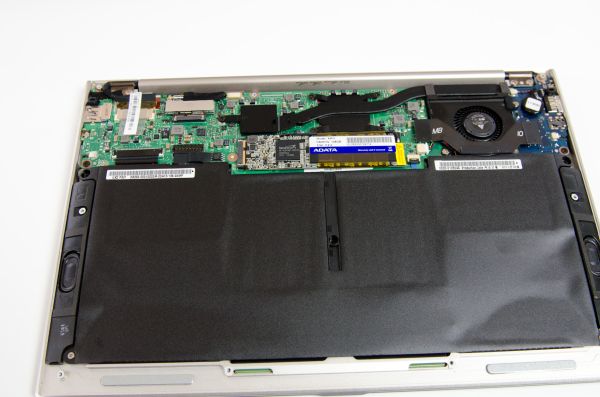





 Quote
Quote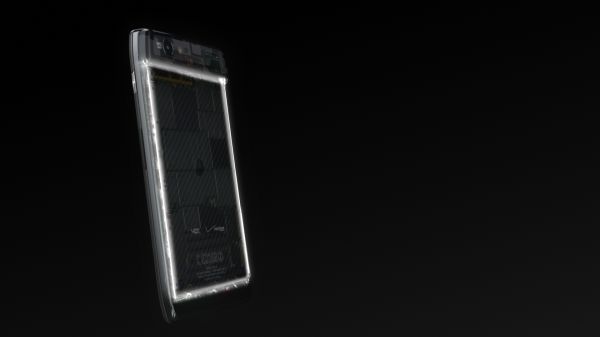
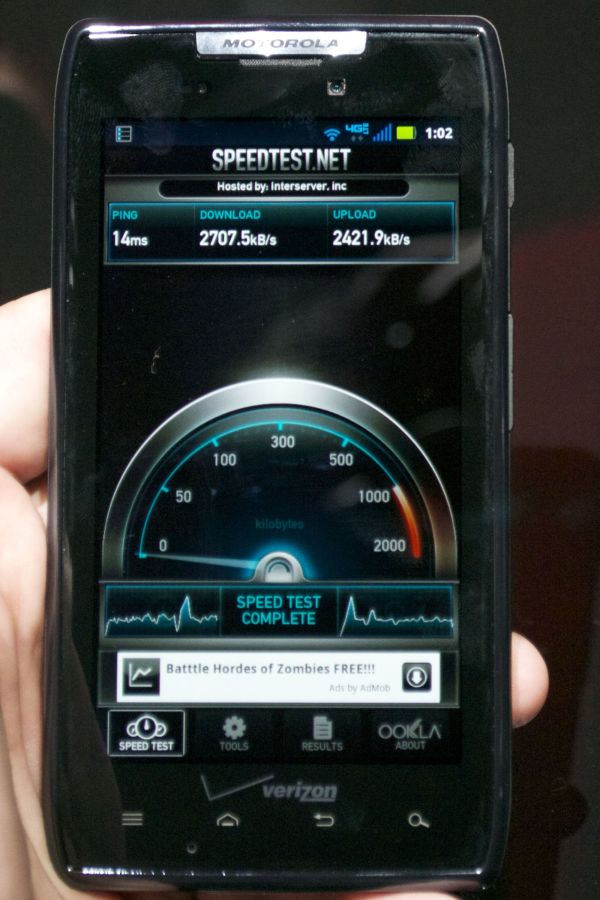

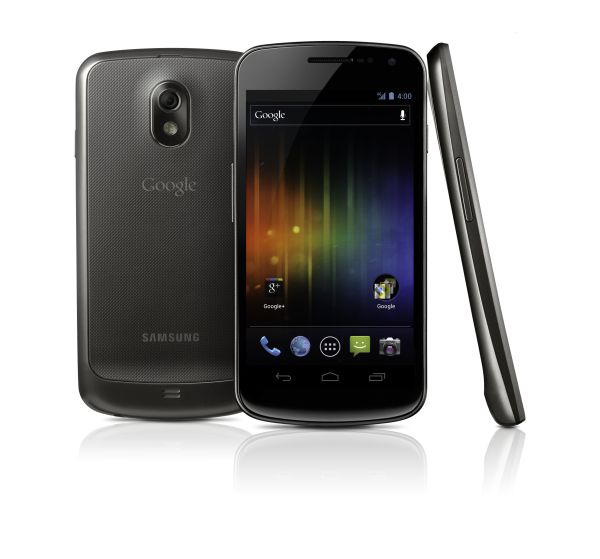


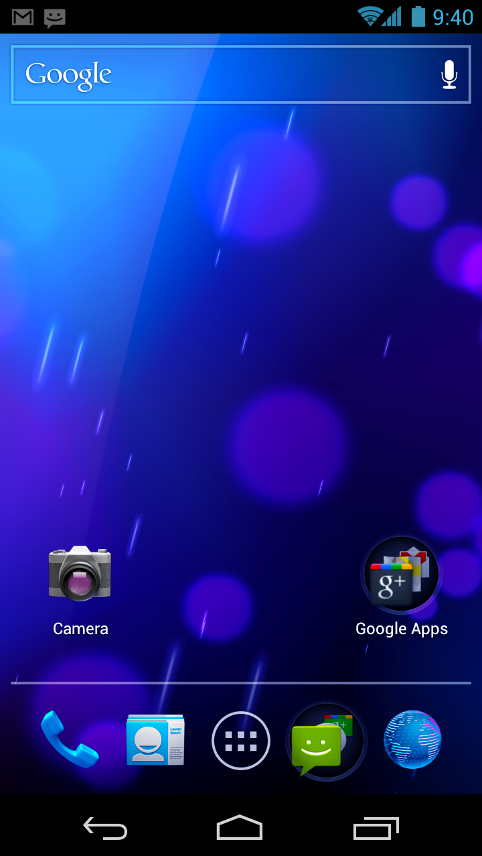
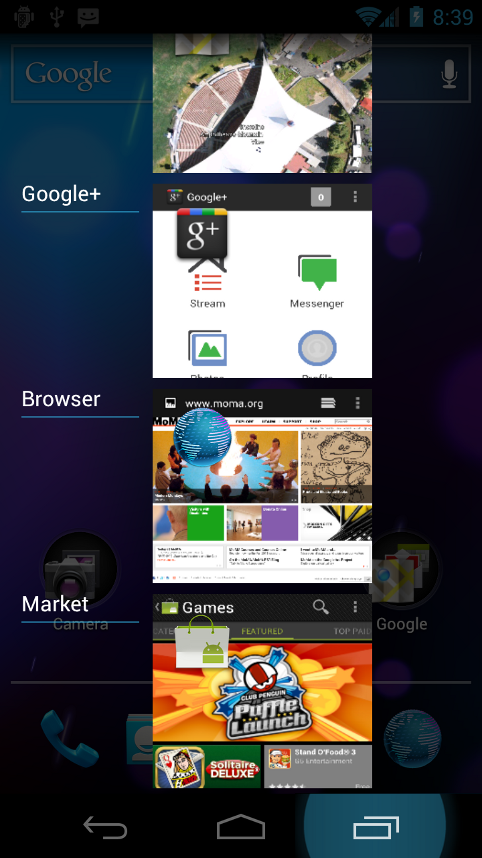
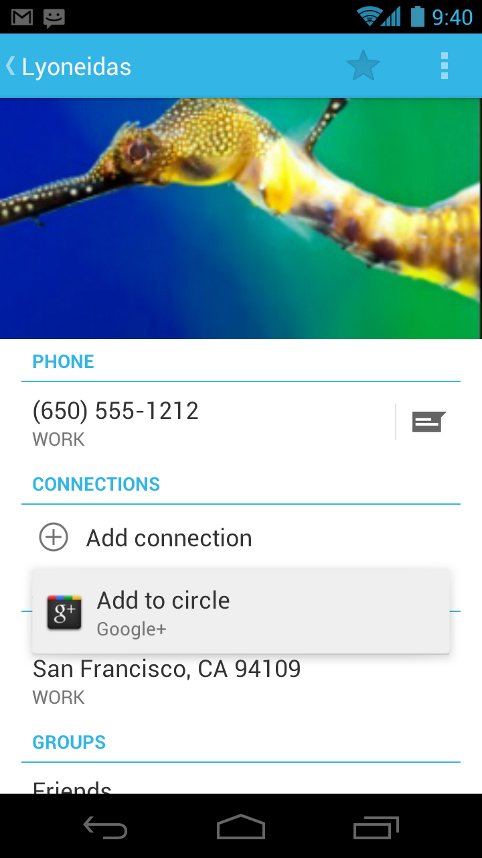

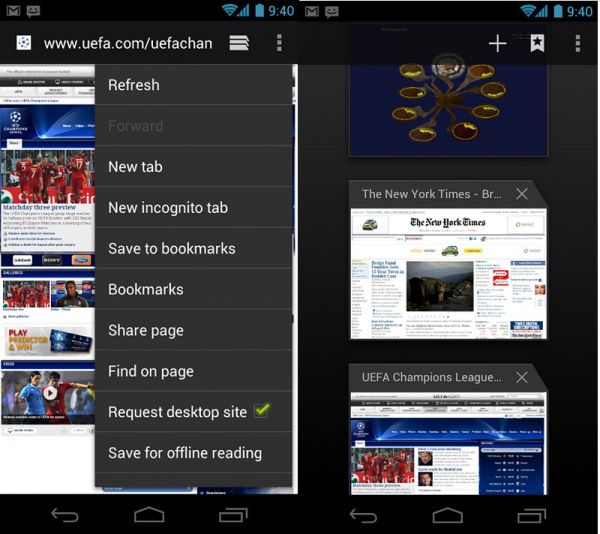



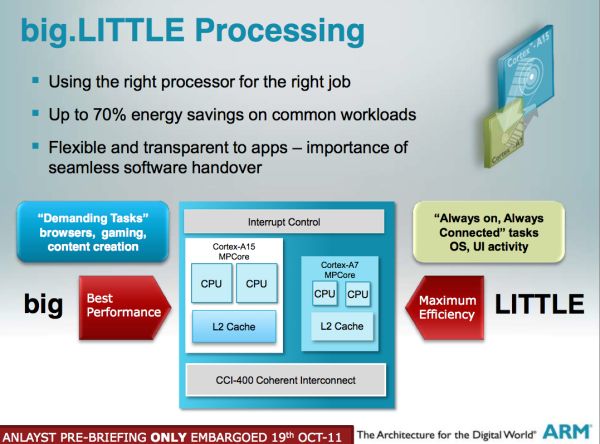










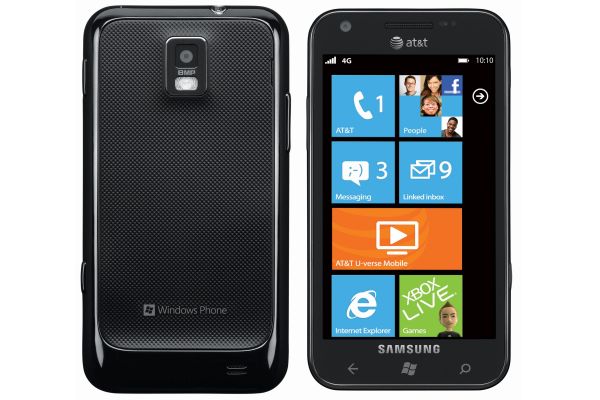
















Bookmarks